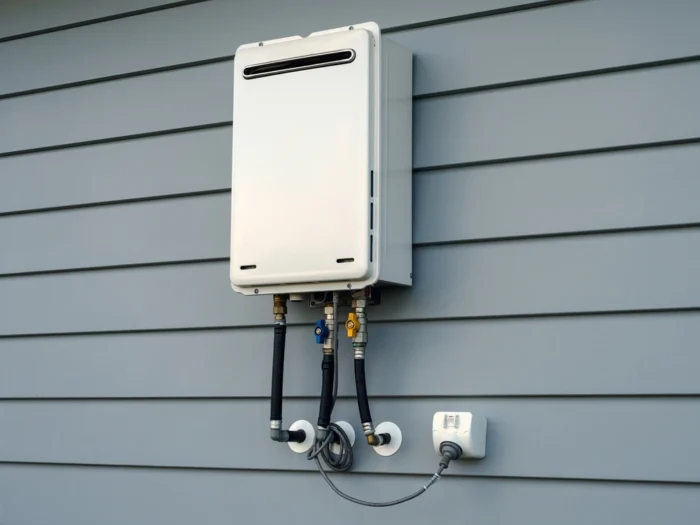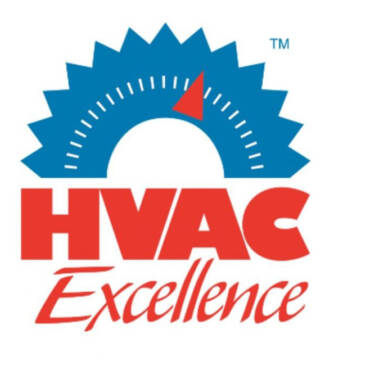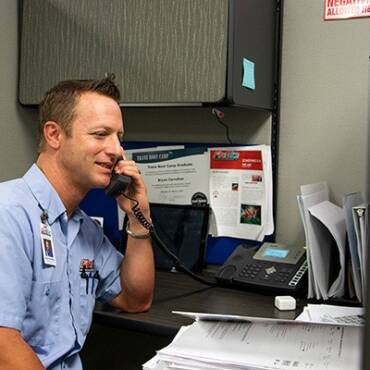Running out of hot water mid-shower is frustrating. Traditional water heaters with tanks can only hold so much hot water. Once it’s gone, you wait. Tankless water heaters solve this problem by heating water on demand. No storage tank needed.
This guide explains the tankless water heater working principle in simple terms. You’ll learn how these units work, their benefits, and whether they’re right for your home. Let’s explore how modern water heating technology can transform your daily routine.
What’s a Tankless Water Heater?
A tankless water heater is a compact unit that heats water instantly as it flows through the system. Unlike traditional heaters that store 40-50 gallons of hot water, tankless models heat water only when you turn on a faucet or appliance.
These units are also called on-demand or instantaneous water heaters. They mount on walls and take up minimal space. The average tankless unit is about the size of a small suitcase. This makes them perfect for homes with limited space.
Traditional tank heaters keep water hot 24/7, which wastes energy. Tankless systems activate only when needed. This fundamental difference makes them more efficient and cost-effective over time.
Understanding How Does a Tankless Water Heater Work
The tankless water heater mechanism is straightforward but effective. When you open a hot water tap, cold water travels through a pipe into the unit. A flow sensor detects the water movement and signals the system to start heating.
Here’s the step-by-step process:
Step 1: Water Flow Detection The moment you turn on hot water, the flow sensor activates. This sensor measures the water flow rate, typically between 0.5 to 5 gallons per minute. The system calculates how much heat is needed based on incoming water temperature and desired output temperature.
Step 2: Heating Activation Gas models ignite a burner that heats a heat exchanger. Electric models activate the tankless water heater element. These heating elements are high-powered coils that transfer energy directly to the water passing through them.
Step 3: Temperature Control A digital control panel manages the entire process. It monitors incoming water temperature and adjusts heating power to maintain your set temperature. Most units let you set precise temperatures between 100°F and 140°F.
Step 4: Instant Hot Water Delivery Water flows through the heat exchanger or around heating elements. The tankless water heater element rapidly transfers heat to the water. Within seconds, hot water reaches your faucet at the temperature you selected.
Step 5: Automatic Shutdown When you close the tap, the flow sensor detects the change. The system immediately stops heating and goes into standby mode. No energy is wasted keeping water hot when you’re not using it.
The heat exchanger is the heart of any tankless system. In gas models, it’s a series of copper or stainless steel coils. Cold water winds through these coils while flames heat them from below. Electric models use multiple high-wattage heating elements immersed in the water flow path.
Modern tankless units include safety features like freeze protection, overheat shutdown, and flame failure detection. These systems make tankless water heaters reliable and safe for residential use.
You may read How to Flush a Tankless Water Heater?
Is Tankless Water Heater Gas or Electric
Tankless water heaters come in two main types: gas-powered and electric. Each has distinct characteristics that suit different homes and needs.
Gas Tankless Water Heaters Gas models use natural gas or propane as fuel. They’re powerful and can heat large volumes of water quickly. A typical gas unit produces 150,000 to 200,000 BTUs of heating power. This makes them ideal for larger homes with multiple bathrooms.
Gas units require proper venting to expel combustion gases. You’ll need either direct venting through an exterior wall or power venting through the roof. Installation costs are higher because of venting requirements and gas line work. However, gas models often have lower operating costs in areas where natural gas is affordable.
Electric Tankless Water Heaters Electric models use high-powered heating elements to warm water. They’re compact, quiet, and don’t need venting. This makes installation simpler and less expensive than gas models.
Electric units work well for smaller homes, apartments, or point-of-use applications. You can install a small electric tankless heater under a sink for instant hot water at that location. This eliminates wait time and reduces water waste.
The main consideration with electric models is power requirements. Whole-home units need 150 to 200 amps of electrical service. Many older homes have only 100-amp service, requiring an electrical panel upgrade. Operating costs depend on local electricity rates.
Which Type Is Better? Your choice depends on several factors. Gas models deliver higher flow rates and work better for large households. Electric models suit smaller spaces and homes without gas service. Consider your home’s existing utilities, hot water demand, and local energy costs when deciding.
For homes in the Denver area, Milehi HVAC provides expert guidance on selecting the right type. Our team assesses your specific needs during consultation for tankless water heater installation near Denver.
Advantages of Tankless Water Heaters
Switching to a tankless system offers several practical benefits that improve daily life and reduce expenses.
Endless Hot Water Supply The biggest advantage is continuous hot water. Tank heaters run out after the stored water is used. Tankless systems heat water continuously as long as flow stays within the unit’s capacity. Take long showers without worry. Run the dishwasher while someone showers. The hot water keeps coming.
Energy Efficiency and Lower Bills Tankless heaters are 24% to 34% more efficient than tank models for homes using 41 gallons or less daily. For homes using around 86 gallons per day, efficiency gains are still 8% to 14%. You save money because the system only heats water when needed.
Traditional tanks constantly reheat stored water as it cools. This standby heat loss wastes significant energy. Tankless units eliminate this waste entirely. Over a year, this translates to $100 to $200 in energy savings for an average household.
Space Savings Tankless units mount on walls and occupy minimal space. A typical unit measures about 28 inches tall, 20 inches wide, and 10 inches deep. Compare this to a 50-gallon tank heater that needs a 60-inch by 24-inch floor space. The space savings allow for better storage or other uses in utility rooms, closets, or basements.
Longer Lifespan Tank water heaters last 10 to 13 years on average. Tankless models last 20 years or more with proper maintenance. This extended lifespan means fewer replacements over your time in a home. While initial costs are higher, the longer life and energy savings provide good value.
Reduced Risk of Water Damage Tank heaters can leak or burst as they age, potentially flooding your home. A failed 50-gallon tank releases all that water into your space. Tankless systems don’t store water, so catastrophic leaks are virtually impossible. This protects your home from costly water damage.
Better Water Quality Water sitting in storage tanks can develop sediment, rust, or bacteria. Tankless systems provide fresh water heated on demand. You’re not using water that’s been sitting in a tank for hours or days. This means cleaner, better-tasting hot water.
Precise Temperature Control Digital controls let you set exact temperatures. No more adjusting faucets to get the right temperature. The system delivers consistent hot water at your preset temperature. Some models even allow different temperature settings for different times of day.
Environmental Benefits Lower energy consumption means reduced carbon footprint. Tankless heaters also last longer, reducing waste from discarded units. Many models use recyclable materials and have minimal environmental impact during manufacturing.
Milehi HVAC specializes in helping Denver homeowners realize these benefits. Our tankless water heater installation near Denver service includes professional sizing, expert installation, and ongoing support to ensure optimal performance.
Choosing the Best Water Heater for Your Home
Selecting the right water heater involves evaluating your household’s specific needs and circumstances.
Assess Your Hot Water Demand Calculate your peak hot water usage. Count how many fixtures might run simultaneously during busy times. A typical shower uses 2.5 gallons per minute. A dishwasher uses 1 to 2 gallons per minute. A washing machine uses 2 to 3 gallons per minute.
Add up concurrent usage to determine the flow rate you need. For example, if two showers and a dishwasher might run at once, you need at least 6 to 7 gallons per minute capacity. Choose a tankless unit rated for that flow rate at your desired temperature rise.
Consider Temperature Rise Requirements Temperature rise is the difference between incoming cold water temperature and desired hot water temperature. In Denver, groundwater temperature averages 50°F to 55°F. If you want 120°F hot water, you need a 65°F to 70°F temperature rise.
Tankless heaters have different flow rates at different temperature rises. A unit might deliver 8 gallons per minute at a 35°F rise but only 4 gallons per minute at a 70°F rise. Always check specifications for your required temperature rise.
Evaluate Installation Requirements Check your home’s existing utilities. Gas models need adequate gas line capacity and proper venting paths. Electric models require sufficient electrical service and may need panel upgrades.
Consider installation location. Placing the unit closer to frequently used fixtures reduces wait time for hot water. However, venting and utility connections may limit placement options. Professional assessment helps identify the best location.
Compare Operating Costs Calculate long-term costs, not just purchase price. Gas models often have higher upfront costs but lower operating expenses in areas with affordable natural gas. Electric models have lower installation costs but potentially higher utility bills depending on electricity rates.
Factor in the unit’s energy factor rating. Higher ratings mean better efficiency and lower operating costs. Compare models’ estimated annual operating costs, which manufacturers provide based on standardized usage patterns.
Plan for Proper Sizing Bigger isn’t always better. Oversized units waste money on unnecessary capacity. Undersized units can’t meet demand during peak usage. Professional sizing accounts for:
- Number of bathrooms and fixtures
- Household size and hot water usage patterns
- Simultaneous usage scenarios
- Climate and incoming water temperature
- Future needs if household size might change
Maintenance Considerations Tankless heaters need annual maintenance to maintain efficiency and longevity. This includes flushing the system to remove mineral buildup, especially in areas with hard water. Denver’s moderately hard water makes regular maintenance important.
Factor maintenance costs into your decision. Some manufacturers require professional maintenance to keep warranties valid. Budget for annual service calls to protect your investment.
Warranty and Support Review warranty coverage carefully. Heat exchangers typically have 10 to 15-year warranties. Other components may have shorter coverage. Extended warranties are often available for additional cost.
Consider manufacturer support and local service availability. Choosing a well-established brand with good local support ensures help when needed. Companies like Milehi HVAC partner with reliable manufacturers and provide ongoing service support.
Point-of-Use vs. Whole-Home Whole-home tankless heaters serve all fixtures from one central unit. Point-of-use models serve individual fixtures or small areas. Point-of-use units work well for:
- Remote bathrooms far from the main heater
- Kitchen sinks where wait times are annoying
- Supplementing an existing system for specific high-demand areas
Some homes use a combination: a whole-home unit for general needs plus point-of-use units for specific locations. This hybrid approach optimizes performance and efficiency.
Professional Installation Matters Proper installation is critical for safety, efficiency, and longevity. Gas units require precise venting and gas line work. Electric units need correct electrical connections and circuit protection. Improper installation can void warranties, create safety hazards, or cause performance problems.
Working with experienced professionals ensures code-compliant installation and optimal performance. Milehi HVAC brings years of experience in tankless water heater installation near Denver. Our team handles permitting, installation, and testing to ensure your system works perfectly from day one.
Conclusion
Understanding how does a tankless water heater work helps you make informed decisions about your home’s water heating. These efficient systems provide endless hot water while reducing energy costs and saving space. Whether you choose gas or electric depends on your home’s infrastructure and needs. Ready to upgrade your water heating system? Contact Milehi HVAC today for expert tankless water heater installation near Denver and experience the benefits of modern, efficient water heating.
FAQs
How long do tankless water heaters last?
Tankless water heaters typically last 20 years or more with proper maintenance. This is nearly double the lifespan of traditional tank heaters, which last 10 to 13 years. Regular annual maintenance, including system flushing, helps achieve maximum lifespan.
Can a tankless water heater supply enough hot water for a large family?
Yes, but proper sizing is essential. Large families need units with higher flow rates or multiple units. A professional assessment determines the right capacity for your household. Some homes install two smaller units rather than one large unit for better coverage.
Are tankless water heaters worth the higher upfront cost?
For most homeowners, yes. The energy savings, longer lifespan, and reduced maintenance costs offset the higher initial investment. Typical payback period is 5 to 10 years. After that, you continue saving money on energy bills while enjoying reliable hot water.
Do tankless water heaters work in cold climates?
Yes, but cold incoming water temperatures require more powerful units. In Denver’s climate, you need a unit sized for the local groundwater temperature. Models with freeze protection features prevent damage during winter. Professional installation ensures proper operation in cold weather.
How often should I maintain my tankless water heater?
Annual maintenance is recommended for optimal performance. In areas with hard water like Denver, more frequent flushing may be necessary. Regular maintenance prevents mineral buildup, maintains efficiency, and extends the unit’s lifespan. Many manufacturers require annual professional service to keep warranties valid.
Whether you require installation, repair, or maintenance, our technicians will assist you with top-quality service at any time of the day or night. Take comfort in knowing your indoor air quality is the best it can be with MOE heating & cooling services Ontario's solution for heating, air conditioning, and ventilation that’s cooler than the rest.
Contact us to schedule a visit. Our qualified team of technicians, are always ready to help you and guide you for heating and cooling issues. Weather you want to replace an old furnace or install a brand new air conditioner, we are here to help you. Our main office is at Kitchener but we can service most of Ontario's cities
Source link



